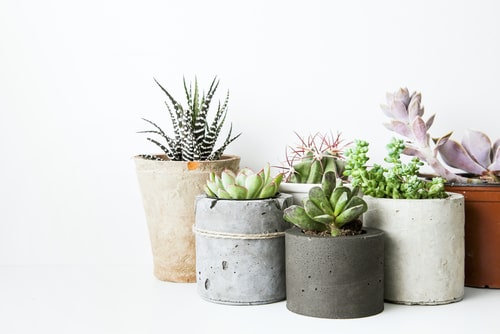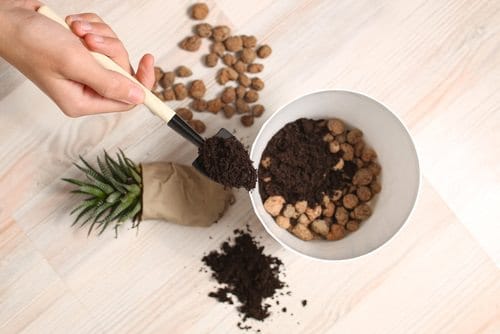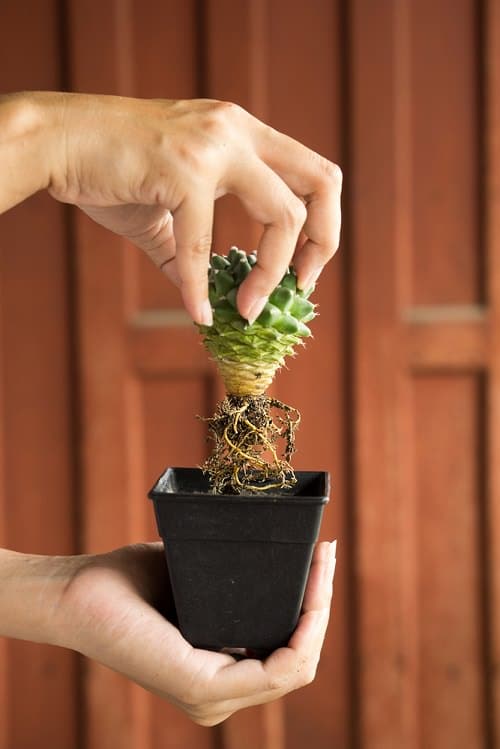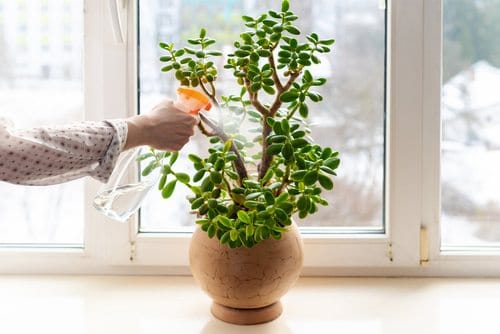Did you get a succulent plant as a gift and wondering how to transplant it correctly? Follow our Succulent Repotting Tips to do it the right way!

After getting a new succulent plant, you would need to re-pot it in 1-2 weeks because it is always a good idea to accommodate them in a slightly better and bigger pot with fresh soil. But, what is the right way to do it? Follow our Succulent Repotting Tips to find out!
Here are some most important succulent watering tips for you!
When Do You Need to Re-pot Succulents?
- If your current succulent pot appears to be way smaller than your plant, it might be a good time to re-pot.
- In case your succulents have remained in the same planters for 2-3 years, there is a good chance that they might have depleted the soil and ripped them off the nutrients. Therefore, there is a need to get rid of the old container and replant them in a rich potting medium.
- If you notice any leaf rot, then it is the right time to re-pot succulents. Take out the entire plant from the pot, and check the roots. If they appear black or are too rotted, you may have to snip the damaged ones using a clean pair of scissors. Once you have removed them, leave the plant in dry soil for 3-4 days to heal.
- If you notice the plant’s roots beginning to appear from the drainage hole of the container, or on the topsoil, it can only mean that it is time to transplant it into one size bigger pot.
- If you notice ‘pups’ growing in the pot, then it is time to re-pot the plant into a new, bigger one.
- You also have an option to remove the pups and transplant them into new pots. This way, you will have more succulents, and the pot will have much-needed space for the old plant.
In warm climates, you can transplant the succulent at any time of the year. If you live in the cold region, always wait till the weather has warmed up considerably before re-potting.
Succulent Repotting Tips
1. Pre Repotting Work

Before you plan to extract the plant from the existing container, remember to water it frequently, especially for the last 1-2 days. The new soil that you are preparing for the plant to replant should not be dry either. In case it does feel dry to touch, spray little water to moisten it.
2. Start with New Growing Medium
The best way is to go for a succulent or cacti mix. Porous sandy potting soil is also a good option for succulents.
Check out our article on best soil for succulents here
3. Use a Trowel

When you are removing the succulent from its existing container, it is safe to use a baby shovel or trowel. But, when you are replanting smaller varieties of succulents or propagating seeds and buds, make sure to use a metal tweezer to carefully transfer the plants to not cause any damage to the roots.
4. Get the Right New Pot
Always go for a container that is one size bigger than the old one. Succulents love to be slightly root-bound, and they do not like to be transferred to much bigger pots.
Also, make sure the new pot has drainage holes at the bottom. Go for colorful planters as the quirky shapes of succulents match well with them.
Learn how to plant succulents in a pot without drainage holes here
5. Root Care

If the plant’s roots look like they are tangled and knotted together in a bunch at the base of the plant, try to loosen them. Feel free to give them a little trim by removing the parts that look rotted.
If you notice any root rot, then it is a good idea to snip the damaged roots away using a sanitized shear. Also, keep the plant in dry soil for 3-4 days to ensure the roots heal before you transplant the plant into a new pot with a fresh potting medium.
6. Break the Pots if You Have To!
If the plant is squished and there’s no way of safely removing it out of the pot, you might have to break it to save the roots from getting damaged.
7. Water or Not?

Do not water the repotted plants immediately to avoid any root rot. You should ideally wait for 4-6 days before you start to water or moisten them. This break, after repotting, gives succulents some time to heal and also avoids any chances of root rot.
8. Coffee Filters
Cover the drainage hole of the pot with coffee filters. This allows optimal drainage of water while keeping the soil nutrients intact and clean.


